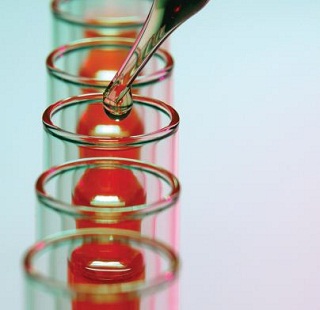Question:
What assay development accessories should be used for protein binding?
The Protein Man Says:
There are a number of assay development accessories for protein binding that are designed to make the researcher's job a lot easier. These include microwell plates (also known as microplates or microtiter plates), activated plates and several substrates that can be used to detect the presence of horseradish peroxidase and alkaline phosphatase in the sample solution. But how do they actually help you? Here's a brief explanation of these accessories.
 Microwell Plates
Microwell Plates
Microplates are ideal for sample collection and storage and for most clinical research, analytical testing procedures and pharmaceutical applications. They can also be used as racks to support glass tube inserts and are treated to provide superior protein binding capacity.
Activated Plates
There are several types of activated microplates that are now being used for various aspects of life science research. Here are some of them.
Biotin Binding Plates
Microplates designed to bind biotinylated molecules and biotin-tagged antibodies are usually coated with neutravidin, streptavidin or avidin.
-
Avidin-coated plates exhibit the strongest affinity with biotin. Avidin can bind up to four biotin molecules making it ideal for both purification and detection strategies.
-
Neutravidin-coated plates are specifically designed to bind biotinylated molecules and biotin-tagged antibodies with low non-specific binding. This makes it ideal for use with antibodies that are easily denatured when bound directly with polystyrene plates. These plates are largely similar to avidin and streptavidin coated plates except for the fact that they are of near neutral pI, have no carbohydrate side chains and lack the RYD sequence.
-
Streptavidin-coated plates-Like neutravidin-coated plates, streptavidin-coated plates are also designed to bind biotinylated molecules and biotin-tagged antibodies. They are ideally used for direct, indirect, competitive and sandwich assays. Their solubility in aqueous buffer and the level of non-specific binding is characteristically lower as compared to avidin due to the absenceof carbohydrate groups.
It is interesting to note that biotin exhibits an extraordinary binding affinity for both streptavidin and avidin. Biotin-streptavidin and biotin-avidin bonds are known to survive up to 3M guanidinehydrochloride and extremes of pH, and can only be reversed by autoclaving or by denaturing the streptavidin with 8M guanidinehydrochloride at pH1.5.
We will be discussing a little more about activated plates in our next post so please watch out for it.






